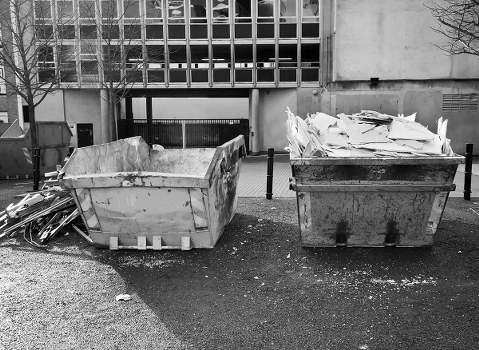Furniture Disposal in Clearances London
Why Proper Furniture Disposal Matters

In the bustling city of London, space is a premium. Whether you're moving homes, renovating, or simply decluttering, proper furniture disposal is essential. Not only does it help maintain a clean and organized environment, but it also plays a critical role in environmental conservation.
Improper disposal of furniture can lead to increased landfill waste, contributing to pollution and resource depletion. By choosing responsible disposal methods, you ensure that your old furniture is either recycled, repurposed, or disposed of in an eco-friendly manner.
Moreover, professional furniture clearance services in London offer convenience and efficiency, saving you time and effort during what can often be a stressful transition period.
Understanding Furniture Clearance Services

Furniture clearance services encompass a range of solutions tailored to the specific needs of individuals and businesses. These services typically include the removal, transportation, and disposal of unwanted furniture items.
In London, where space constraints are common, professional clearance services provide a hassle-free way to manage bulky items. They handle everything from dismantling large pieces to ensuring that items are recycled or donated appropriately.
Choosing a reputable service ensures that your furniture disposal adheres to local regulations and environmental standards, giving you peace of mind.
Benefits of Using Professional Disposal Services

Opting for professional furniture disposal services in London comes with numerous advantages:
- Efficiency: Professionals can quickly and safely remove bulky items, saving you valuable time.
- Environmental Responsibility: Reputable services prioritize recycling and donating, reducing landfill waste.
- Safety: Handling large furniture pieces can be risky; professionals are trained to manage these tasks safely.
- Convenience: From scheduling to final disposal, a comprehensive service handles all aspects seamlessly.
Steps Involved in Furniture Disposal

Understanding the process can help you prepare for effective disposal. Here are the typical steps involved:
- Assessment: Evaluating the items to determine the best disposal method.
- Scheduling: Booking a suitable time for removal.
- Removal: Safely transporting furniture from your location.
- Processing: Sorting items for recycling, donation, or disposal.
- Final Disposal: Ensuring items are disposed of in an environmentally friendly manner.
Eco-Friendly Disposal Options

Adopting eco-friendly disposal practices is crucial for sustainability. Here are some green options available in London:
- Recycling: Many furniture items can be broken down into recyclable materials like metal, wood, and glass.
- Donation: Good condition furniture can be donated to charities or non-profit organizations.
- Upcycling: Repurposing old furniture into new, functional pieces.
- Composting: Wooden furniture can sometimes be composted if treated without harmful chemicals.
Choosing the Right Disposal Service

With numerous options available, selecting the right furniture disposal service in London can be daunting. Consider the following factors to make an informed decision:
- Reputation: Look for reviews and testimonials to gauge the reliability of the service.
- Services Offered: Ensure they provide the specific disposal solutions you need.
- Pricing: Compare quotes to find a service that fits your budget without compromising quality.
- Environmental Policies: Choose services committed to sustainable disposal practices.
Cost Factors in Furniture Disposal

The cost of furniture disposal in London varies based on several factors:
- Volume and Size: Larger quantities or bulkier items may incur higher fees.
- Type of Service: Comprehensive services that include packing, removal, and processing may be more expensive.
- Distance: The location of the disposal site relative to your property can affect costs.
- Special Handling: Items requiring special care, such as antiques or electronics, may have additional charges.
DIY vs. Professional Disposal

While some may consider a DIY approach to furniture disposal, there are significant benefits to hiring professionals:
- Time-Saving: Professionals can complete the task quickly, allowing you to focus on other priorities.
- Proper Equipment: They have the necessary tools to handle and transport heavy items safely.
- Compliance: Ensures that disposal methods adhere to local regulations and environmental standards.
- Stress Reduction: Eliminates the physical and logistical challenges associated with disposal.
Environmental Impact of Furniture Disposal

Furniture disposal has a significant environmental footprint. Improper disposal methods contribute to landfill overcrowding, resource depletion, and pollution.
By choosing responsible disposal practices, you help reduce waste, conserve natural resources, and minimize environmental degradation. Recycling and donating extend the lifecycle of furniture items, promoting sustainability and reducing the need for new materials.
Additionally, eco-friendly disposal practices support the circular economy, where products are reused, repaired, and recycled, fostering a more sustainable society.
Regulations and Guidelines in London

London has specific regulations governing furniture disposal to ensure environmental protection and public safety. Familiarize yourself with these guidelines to ensure compliance:
- Waste Disposal Laws: Certain types of furniture may require special handling or permits for disposal.
- Recycling Requirements: Materials like wood, metal, and glass must be sorted and processed according to local recycling protocols.
- Donation Standards: Donated items should be in good condition, free from damage or excessive wear.
- Hazardous Materials: Furniture containing hazardous substances, such as lead paint, must be disposed of following specific safety procedures.
Tips for Effective Furniture Disposal

To ensure a smooth and responsible disposal process, consider the following tips:
- Assess Your Needs: Identify which items need to be disposed of and determine the best method for each.
- Schedule Ahead: Plan the disposal in advance to avoid last-minute hassles.
- Sort Items: Separate items based on their condition and disposal method (recycle, donate, trash).
- Measure for Transport: Ensure that large items can be easily transported from your location to the disposal site.
- Hire Reputable Services: Choose experienced professionals with positive reviews and sustainable practices.
Sustainable Furniture Disposal Practices

Embracing sustainable disposal practices benefits both the environment and your community. Here are ways to make your furniture disposal more sustainable:
- Recycle: Break down items into recyclable materials and dispose of them accordingly.
- Donate: Provide usable furniture to those in need through charities and non-profits.
- Upcycle: Transform old furniture into new, functional pieces through DIY projects or professional services.
- Compost: For wooden furniture, consider composting if possible.
- Reduce Waste: Purchase high-quality, durable furniture to minimize the frequency of disposal.
Impact on Community and Environment

Proper furniture disposal has far-reaching impacts on both the community and the environment. By reducing landfill waste, you contribute to cleaner neighborhoods and lower pollution levels. Recycling and donating furniture support local charities and provide essential resources to those in need.
Moreover, sustainable disposal practices help preserve natural resources by reducing the demand for new materials. This preservation is crucial for maintaining biodiversity and ensuring the long-term health of our planet.
Community-driven disposal initiatives also foster a sense of responsibility and collective effort towards environmental stewardship.
Innovative Disposal Solutions in London

London is home to several innovative solutions for furniture disposal, catering to diverse needs and promoting sustainability:
- Furniture Recycling Centers: Specialized centers that handle the breakdown and recycling of various materials.
- Donation Networks: Platforms that connect individuals with charities in need of furniture donations.
- Upcycling Workshops: Facilities that provide resources and guidance for transforming old furniture into new items.
- Green Removal Services: Companies dedicated to eco-friendly disposal practices, minimizing environmental impact.
Case Studies: Successful Furniture Disposal

Examining successful furniture disposal cases can provide valuable insights into effective practices:
One London-based company partnered with local charities to ensure that all donated furniture was distributed to those in need, reducing waste and supporting the community. Another initiative focused on recycling materials from old furniture, significantly cutting down on landfill contributions.
These case studies highlight the importance of collaboration, innovation, and commitment to sustainability in achieving effective disposal outcomes.
Future Trends in Furniture Disposal

The landscape of furniture disposal is evolving, driven by technological advancements and increasing environmental awareness:
- Smart Sorting: Automated systems for better categorization and processing of materials.
- Circular Economy Models: Emphasizing reuse, repair, and recycling to extend the lifecycle of furniture.
- Sustainable Materials: Growing use of eco-friendly materials in furniture design, reducing the environmental impact of disposal.
- Digital Platforms: Online services connecting individuals with disposal resources and recycling centers efficiently.
How to Prepare for Furniture Disposal

Preparation is key to ensuring a smooth disposal process. Follow these steps to get ready:
- Inventory Your Furniture: Make a list of items you plan to dispose of, noting their condition.
- Choose Disposal Methods: Decide whether to recycle, donate, or dispose of each item based on its state.
- Contact Professionals: Reach out to reputable disposal services to schedule removal.
- Clean and Repair: Ensure items are clean and, if donating, in good condition.
- Arrange Access: Clear pathways for easy removal of large furniture pieces.
Maximizing Efficiency in Disposal

To maximize efficiency when disposing of furniture, consider the following strategies:
- Plan Ahead: Schedule disposal services in advance to ensure availability.
- Bundle Items: Group similar items together for quicker removal and processing.
- Use Proper Tools: Utilize tools for disassembling furniture if necessary, making transport easier.
- Communicate Clearly: Provide detailed information to disposal services to facilitate a smooth process.
- Follow Up: Confirm that items have been disposed of correctly and sustainably.
Common Challenges and Solutions

Furniture disposal can present several challenges, but with the right approach, they can be overcome:
- Space Constraints: Utilize professional services that can efficiently handle removal in tight spaces.
- Time Limitations: Schedule services during off-peak hours to expedite the process.
- Regulatory Compliance: Choose services well-versed in local disposal laws to ensure adherence.
- Environmental Concerns: Opt for eco-friendly disposal methods to mitigate environmental impact.
Customer Support and Services

Reliable disposal services offer robust customer support to address your needs effectively:
- 24/7 Availability: Access to services at your convenience.
- Personalized Solutions: Tailored disposal plans to fit your specific requirements.
- Transparent Pricing: Clear and upfront pricing without hidden fees.
- Professional Staff: Trained and courteous personnel to handle your disposal needs.
Contact us today to learn more about our comprehensive furniture disposal services in London. Book your service now and make your clearance process stress-free and eco-friendly.